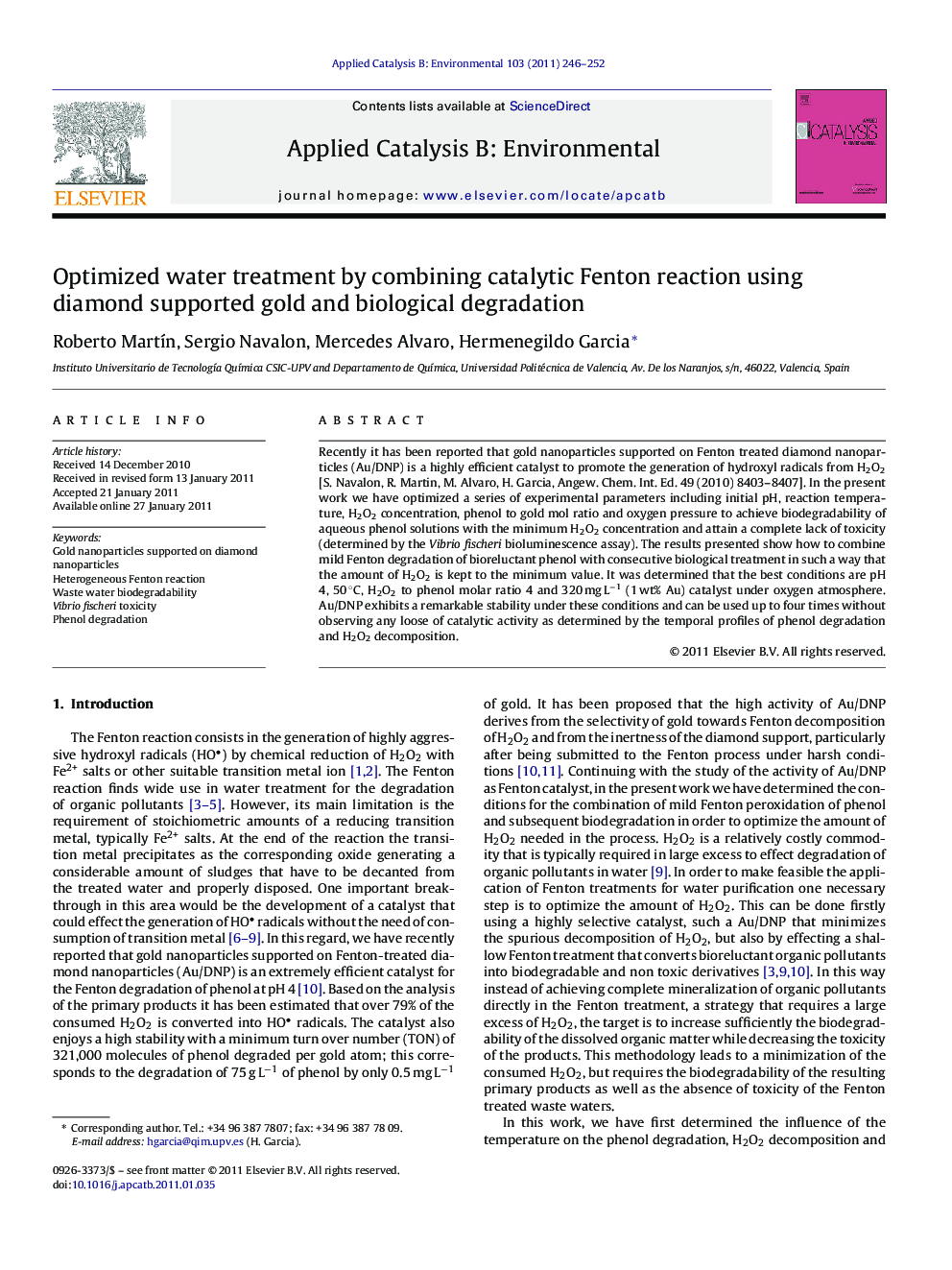| Article ID | Journal | Published Year | Pages | File Type |
|---|---|---|---|---|
| 47016 | Applied Catalysis B: Environmental | 2011 | 7 Pages |
Recently it has been reported that gold nanoparticles supported on Fenton treated diamond nanoparticles (Au/DNP) is a highly efficient catalyst to promote the generation of hydroxyl radicals from H2O2 [S. Navalon, R. Martin, M. Alvaro, H. Garcia, Angew. Chem. Int. Ed. 49 (2010) 8403–8407]. In the present work we have optimized a series of experimental parameters including initial pH, reaction temperature, H2O2 concentration, phenol to gold mol ratio and oxygen pressure to achieve biodegradability of aqueous phenol solutions with the minimum H2O2 concentration and attain a complete lack of toxicity (determined by the Vibrio fischeri bioluminescence assay). The results presented show how to combine mild Fenton degradation of bioreluctant phenol with consecutive biological treatment in such a way that the amount of H2O2 is kept to the minimum value. It was determined that the best conditions are pH 4, 50 °C, H2O2 to phenol molar ratio 4 and 320 mg L−1 (1 wt% Au) catalyst under oxygen atmosphere. Au/DNP exhibits a remarkable stability under these conditions and can be used up to four times without observing any loose of catalytic activity as determined by the temporal profiles of phenol degradation and H2O2 decomposition.
Graphical abstractFigure optionsDownload full-size imageDownload as PowerPoint slideResearch highlights► A new heterogeneous Fenton catalyst based on diamond supported gold nanoparticles is used. ► Chemical Fenton treatment is combined with biodegradation for treatment of phenol aqueous solutions. ► The Fenton reaction has been used to increase the biodegradability of bioreluctant phenol solutions. ► Lack of ecotoxicity and toxicity versus Vibrio Fisheri after mild Fenton treatment is achieved.
